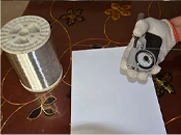Oct . 11, 2024 23:05 Back to list
oem metal screening mesh
Understanding OEM Metal Screening Mesh Applications, Benefits, and Manufacturing Process
In today's industrial landscape, the need for efficient filtration and separation solutions is paramount. One such solution gaining significant traction is the OEM metal screening mesh. This specialized product is designed to meet diverse requirements across various industries, from mining and agriculture to food processing and pharmaceuticals. In this article, we will delve into the characteristics, applications, benefits, and the manufacturing process of OEM metal screening mesh.
What is OEM Metal Screening Mesh?
OEM, or Original Equipment Manufacturer, metal screening mesh refers to customized metal mesh products manufactured according to specific requirements of various industries. This mesh is fabricated from different metals, such as stainless steel, aluminum, or carbon steel, depending on the application and environmental conditions. The primary function of metal screening mesh is to filter, separate, or screen materials effectively while maintaining structural integrity and durability.
Key Characteristics of OEM Metal Screening Mesh
1. Versatility OEM metal screening mesh can be customized in various sizes, shapes, and mesh configurations. This versatility enables its use in numerous applications, making it a preferred choice for many manufacturers.
2. Durability Metal screening mesh is known for its strength and resistance to wear and tear. The materials used in manufacturing this mesh can withstand harsh environmental conditions, ensuring a longer lifespan compared to other screening materials.
3. Efficiency The design of metal screening meshes allows for efficient filtration that can handle various particle sizes. Depending on the requirement, manufacturers can produce meshes with fine or coarse openings to ensure optimal performance.
4. Corrosion Resistance Many metal meshes, especially those made from stainless steel, offer excellent resistance to corrosion and rust. This feature is particularly important in industries where cleanliness and hygiene are critical, such as food processing and pharmaceuticals.
5. Customization As an OEM product, metal screening meshes can be tailored to specific dimensions and mesh patterns as per customer specifications. This customization allows companies to optimize their processes and improve overall efficiency.
Applications of OEM Metal Screening Mesh
1. Mining and Minerals In the mining industry, OEM metal screening mesh is widely used for separating different sizes of minerals and ores. It aids in the efficient extraction of valuable materials while ensuring minimal loss and environmental impact.
2. Agriculture Metal screening is crucial in agriculture for sifting and separating seeds, grains, and fertilizers. It helps in ensuring uniformity and purity in agricultural products, which is essential for quality control.
oem metal screening mesh

3. Food Processing Hygiene and safety are paramount in food processing. OEM metal screening mesh is used to separate contaminants and ensure only the desired products pass through. Its corrosion-resistant properties make it ideal for this application.
4. Pharmaceuticals In the pharmaceutical industry, the need for strict contamination control is critical. Metal screening meshes help in the processing and manufacturing of medicines, ensuring that impurities are effectively removed.
5. Construction Metal screening mesh can be found in various construction applications, including shoring, reinforcement, and as a barrier for safety. Its strength lends itself to creating robust structures that can endure significant stress.
Manufacturing Process of OEM Metal Screening Mesh
The manufacturing process of OEM metal screening mesh involves several key steps
1. Material Selection The process begins with selecting the appropriate metal based on the intended application and environmental factors.
2. Mesh Design Technical specifications are determined, including mesh size, opening, and overall dimensions, tailored to meet customer needs.
3. Fabrication Advanced machinery cuts and weaves the metal to create the desired mesh pattern. Depending on the complexity, additional processes such as welding or machining may be used.
4. Finishing Touches After fabrication, the mesh is often treated to enhance its properties, such as coating for added corrosion resistance.
5. Quality Control Rigorous testing is conducted to ensure the final product meets industry standards and customer expectations before it is shipped.
Conclusion
OEM metal screening mesh plays a vital role in various industries, providing efficient solutions for filtration and separation challenges. Its combination of durability, customization, and efficiency makes it an invaluable asset for manufacturers looking to optimize their processes. As industries evolve and the demand for high-quality screening solutions continues to grow, OEM metal screening mesh will undoubtedly remain at the forefront of industrial innovation.
share
-
Safety Mesh for Windows – Durable Mosquito and Insect Protection Solutions
NewsJul.08,2025
-
12x24x1 Air Filter – High Efficiency Replacement for Improved Air Quality
NewsJul.08,2025
-
Premium Stainless Steel Mosquito Mesh - Durable, Rust-Resistant Protection for Windows & Doors
NewsJul.08,2025
-
Premium Stainless Steel Garden Mesh for Lasting Durability Best & High Quality Mesh Solutions
NewsJul.07,2025
-
Gold and White Blackout Curtains – Elegant Light Blocking & Insulation for Home
NewsJul.07,2025
-
Premium Spa Filter Cartridge for Clean Water Spa Pool Filters Cartridges for Jacuzzi Durable, high-efficiency spa filter cartridge for spas and jacuzzis. Improve water quality—order your pool filter cartridge now!
NewsJul.07,2025

